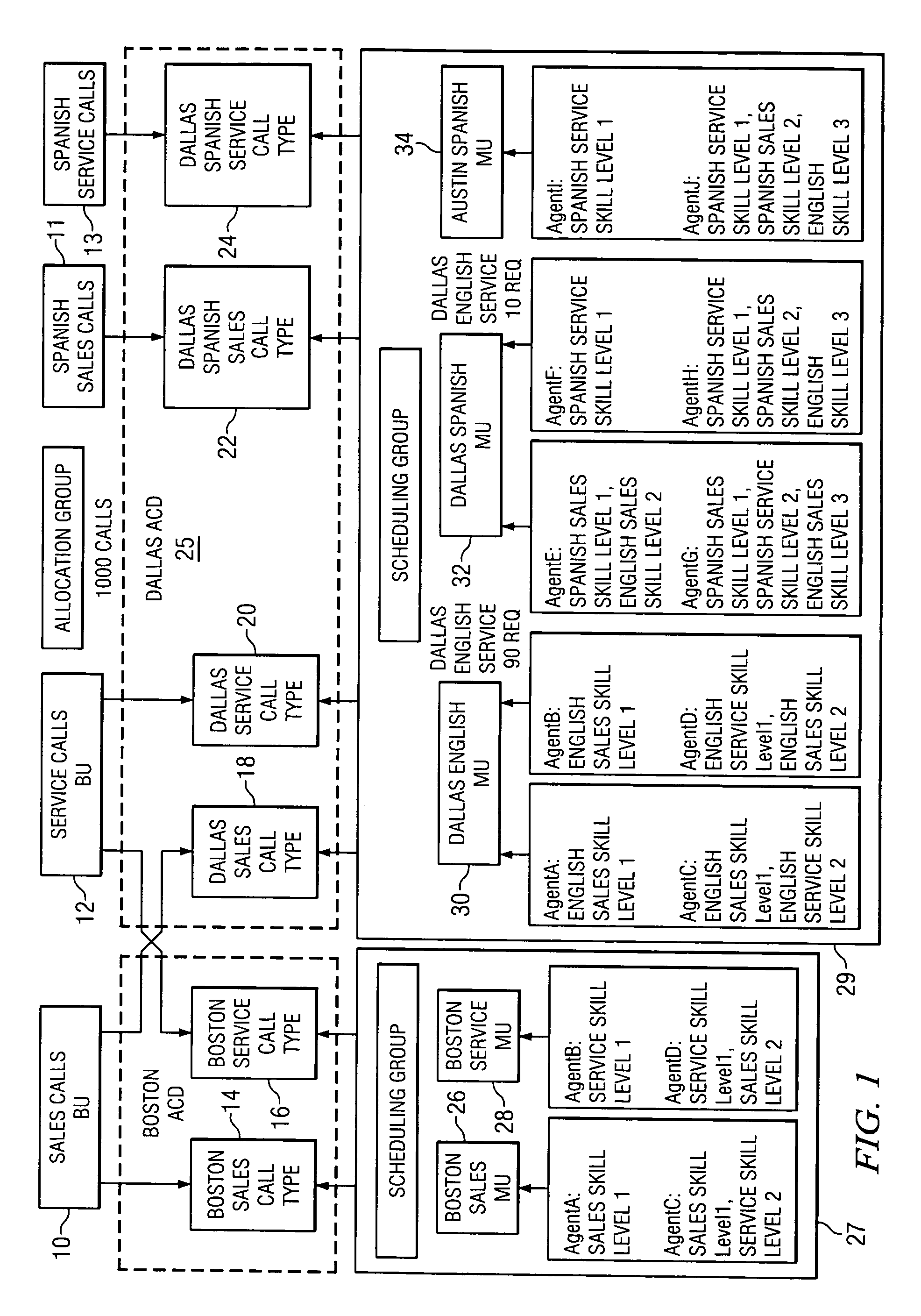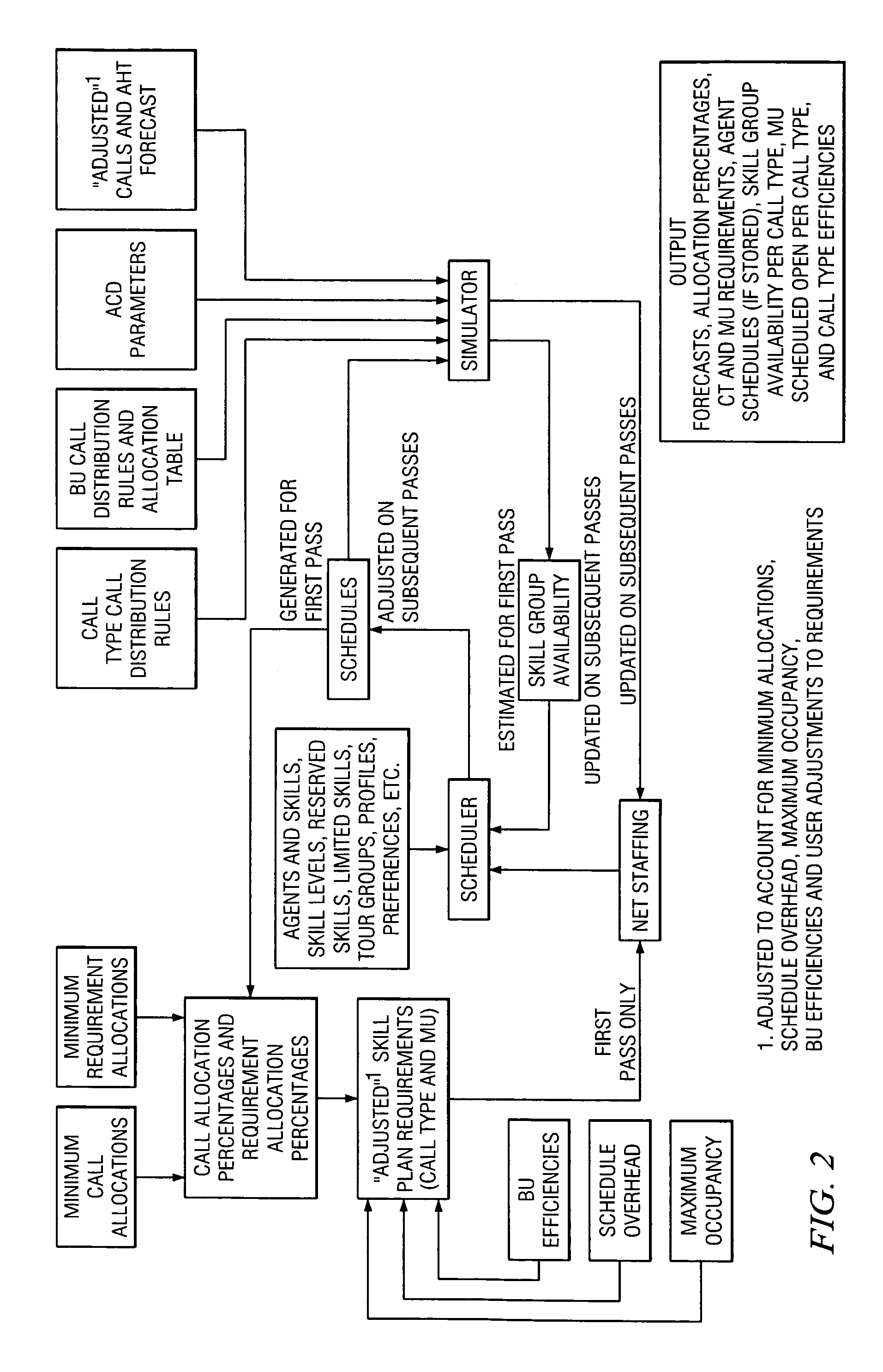Method and system for skills-based planning and scheduling in a workforce contact center environment
a technology of contact center environment and workforce, applied in the field of workforce contact center environment, can solve the problems of unforeseen shortage of billing call coverage, complex and complicated “matching” of calls to agents by acd, and achieve the effect of reducing the level of skill coverag
- Summary
- Abstract
- Description
- Claims
- Application Information
AI Technical Summary
Benefits of technology
Problems solved by technology
Method used
Image
Examples
Embodiment Construction
[0023]The present invention is described in the context of a telephone call center. One of ordinary skill, however, will appreciate that the inventive functionality may be used in any generic “contact center” that handles one or more of the following contact types: telephone calls, voice mails, e-mails, faxes, mail, web callback requests, web chats, web voice calls, web video calls and outbound calls, and the like). In addition, the invention may be incorporated into any work environment where tasks are allocated by skill.
[0024]Familiarity with telephone call center operations is presumed. In such operations, it is desired to plan, schedule and manage workforce personnel in an environment in which there is a varying workload by time of day and by day of week to be staffed with a variable number of servers. In general, these servers or “agents” are required to respond to an event load that has been forecast to occur in the future. One such environment is a telephone call center in wh...
PUM
 Login to View More
Login to View More Abstract
Description
Claims
Application Information
 Login to View More
Login to View More - R&D
- Intellectual Property
- Life Sciences
- Materials
- Tech Scout
- Unparalleled Data Quality
- Higher Quality Content
- 60% Fewer Hallucinations
Browse by: Latest US Patents, China's latest patents, Technical Efficacy Thesaurus, Application Domain, Technology Topic, Popular Technical Reports.
© 2025 PatSnap. All rights reserved.Legal|Privacy policy|Modern Slavery Act Transparency Statement|Sitemap|About US| Contact US: help@patsnap.com



